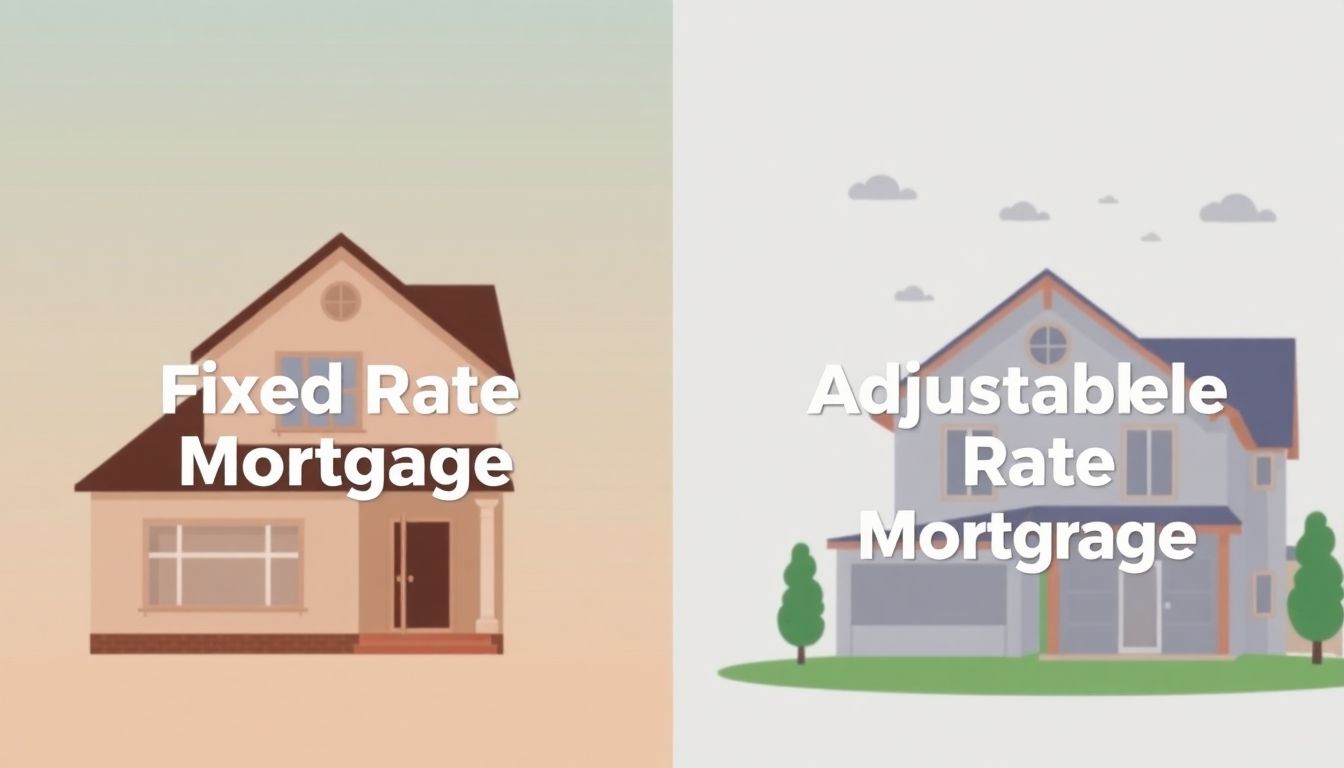Fixed vs. Adjustable-Rate Mortgage: Which Loan is Right for You?
Imagine Sarah and Tom, a young couple excited to buy their first home. As they explore mortgage options, they face a big question: Should they choose a fixed-rate or an adjustable-rate mortgage? Fixed-rate mortgages have an interest rate that stays the same. Adjustable-rate mortgages (ARMs) have interest rates that can change over time. The better option depends on your situation, your risk tolerance, and your goals.
Understanding Fixed-Rate Mortgages
A fixed-rate mortgage keeps the interest rate constant during the entire loan. This means the monthly payments remain the same. You always know what you will pay.
Predictable Payments and Stability
Fixed-rate mortgages offer stability. Knowing your payment amount helps with budgeting. You can plan your finances with greater certainty. This predictability is valuable.
For instance, if your mortgage payment is $1,500, you will pay $1,500 every month for the life of the loan. You can plan your expenses accordingly. This simplifies things.
Protection Against Rising Interest Rates
A fixed rate protects you from hikes. If market interest rates rise, your rate stays put. You avoid increased monthly payments.
Historically, interest rates go up and down. Having a fixed rate offers safety. Borrowers stay shielded from rising rates. This protects them.
Drawbacks: Potentially Higher Initial Rates
Fixed rates may start higher than rates on ARMs. Lenders charge a premium for the security. This can mean larger payments initially.
Lenders take on more risk with fixed rates. They offset this risk with slightly elevated initial rates. Weigh the costs carefully.
Understanding Adjustable-Rate Mortgages (ARMs)
Adjustable-rate mortgages (ARMs) have interest rates that change. The rate adjusts based on market conditions. This could affect your monthly payments.
Initial "Teaser" Rates and Potential Savings
ARMs often start with low rates. These "teaser" rates can save you money. The low introductory period is attractive.
Imagine an ARM with a first year rate of 5%, compared to a fixed rate of 7%. You could save thousands in the beginning. Weigh short term gains against possible long term risk.
How ARMs Adjust: Index and Margin
ARMs adjust using an index and margin. The index is a benchmark interest rate. The margin is the lender's added percentage.
A common index is the Secured Overnight Financing Rate (SOFR). If the SOFR is 2% and the margin is 3%, your interest rate is 5%. This calculation determines your rate.
Interest Rate Caps: Limiting the Risk
Interest rate caps limit how much the ARM rate can change. These protect against extreme rate increases. Caps provide some peace of mind.
There are initial, periodic, and lifetime caps. Initial caps limit the first rate adjustment. Periodic caps control each subsequent hike. Lifetime caps limit the total rate rise.
Factors to Consider When Choosing
Choosing the right mortgage takes careful thought. Consider your financial situation. Consider how long you'll own the house. Think about the interest rate environment.
Your Financial Situation and Risk Tolerance
Evaluate income stability. Check your debt levels. Determine your tolerance for risk. These all impact your choice.
Assess your budget. Project potential interest rate scenarios. This informs the decision. A low tolerance for risk makes a fixed rate a better choice.
Your Homeownership Timeline
How long do you plan to stay in the home? If moving soon, an ARM could be beneficial. Short-term ownership changes the equation.
For example, an ARM is fine if you plan to move in five years. This will allow you to benefit from the lower interest rates. Consider your plans carefully.
Current and Expected Interest Rate Environment
Market conditions affect your choice. A mortgage expert can share what they expect to happen to rates. Their knowledge is key.
"Interest rates are expected to remain stable for the next year," said John Smith, a senior mortgage analyst. This insight can guide your decision.
Refinancing Considerations
Refinancing offers flexibility. You can switch mortgages. It lets you adapt to changing conditions.
Refinancing from ARM to Fixed-Rate
When rates rise, consider refinancing from an ARM to a fixed-rate mortgage. This provides stability. It avoids unpredictable increases.
Rising interest rates could lead to higher payments on your ARM. Refinancing could make sense. Lock in a fixed rate before it is too late.
Refinancing to a Different ARM
Refinancing to another ARM makes sense sometimes. A new ARM may offer better terms. Shop around for competitive rates.
If you find an ARM with a lower rate or better terms, refinancing could save you money. Compare offers before committing.
Case Studies: Fixed vs. ARM in Action
Real-world examples clarify the pros and cons. Consider these hypothetical scenarios. They illustrate how each mortgage works.
Case Study 1: Long-Term Homeowner with a Fixed Income
Meet Mary, a retiree with a fixed income. A fixed-rate mortgage provides stability. Her payments remain constant.
Mary values budget certainty. The fixed rate helps her stay financially secure. This option fits her needs.
Case Study 2: Short-Term Homeowner Expecting Income Growth
Consider David, a young professional. He expects his income to grow. An ARM may suit him.
David plans to move in a few years. The ARM allows him to capitalize on the low interest rates. His financial situation supports this choice.
Conclusion
Fixed-rate mortgages offer stability with constant payments. Adjustable-rate mortgages (ARMs) offer lower initial rates. However, the interest can change. The decision depends on your situation. This also hinges on your risk tolerance, and financial goals. Talk to a mortgage professional for personalized advice. Their insights can guide you toward the best choice.
